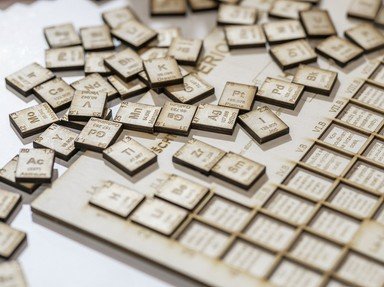Quiz Answer Key and Fun Facts
1. Gold was one of the first metals discovered and used by ancient man. Why was gold one of the first metals to be mined and worked by the ancients?
2. Gold is element 79 on the periodic table of elements. How many naturally occurring isotopes of gold exist?
3. The first use that ancient people found for gold was what?
4. Gold is the most malleable of all metals, meaning that it can be beaten into very thin sheets. A single gram of gold can be beaten into a sheet large enough to cover what area?
5. In addition to being malleable, gold is also highly ductile. What does this mean?
6. One of gold's most important attributes that makes it a useful metal is that it is very resistant to corrosion. Are there any acids that will attack gold?
7. Where was most of the gold that exists on Earth originally formed?
8. If you were looking for some gold in your home, where would you be most likely to find some?
9. Many heavy metals, such as lead and plutonium, are highly toxic to humans. Is swallowing metallic gold dangerous?
10. In 2013, which country was the world's largest producer of gold?
Source: Author
daver852
This quiz was reviewed by FunTrivia editor
rossian before going online.
Any errors found in FunTrivia content are routinely corrected through our feedback system.
